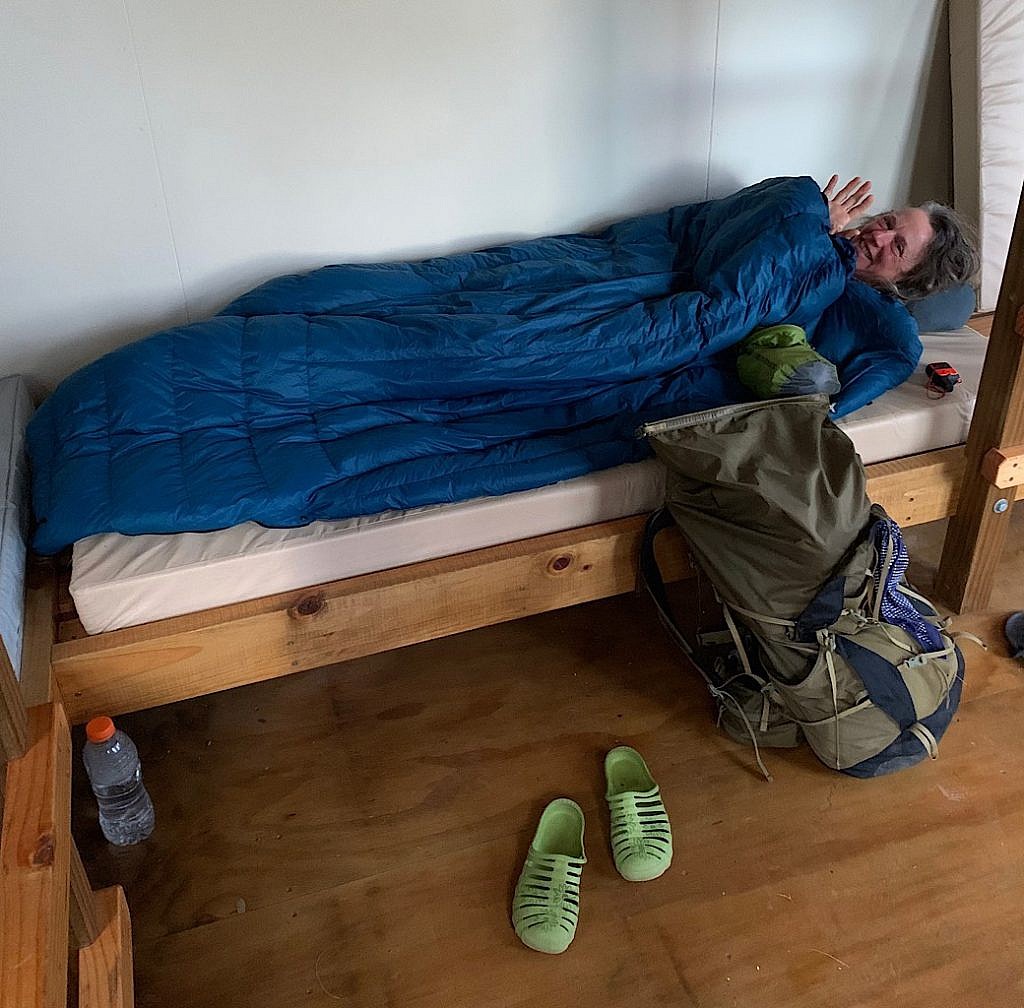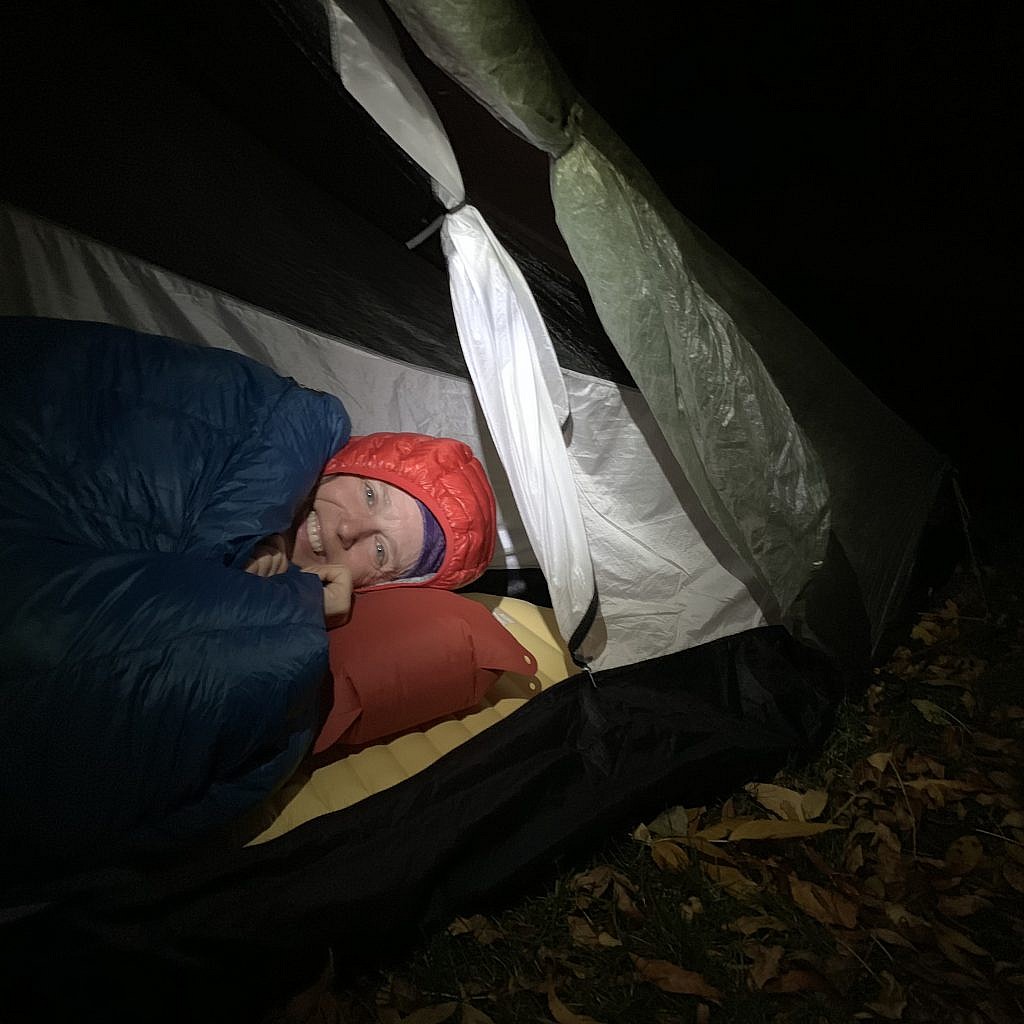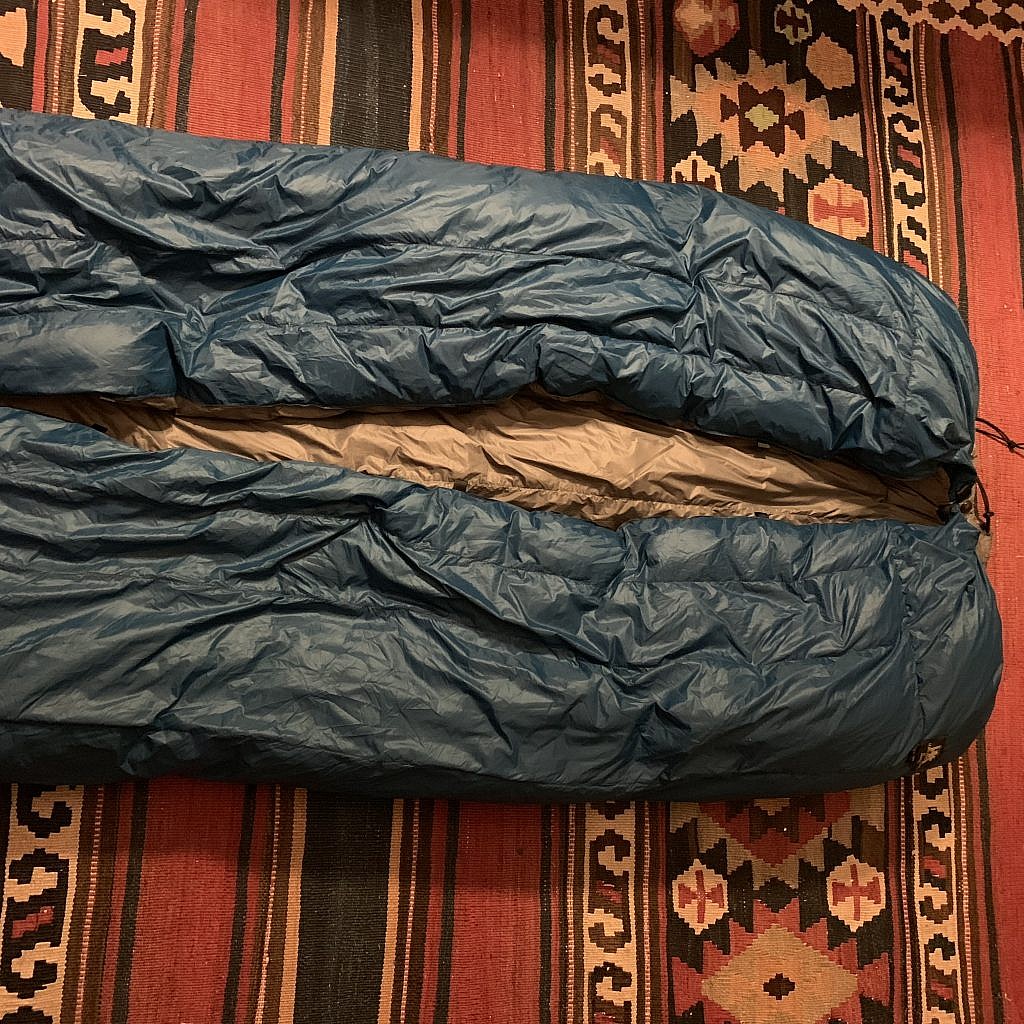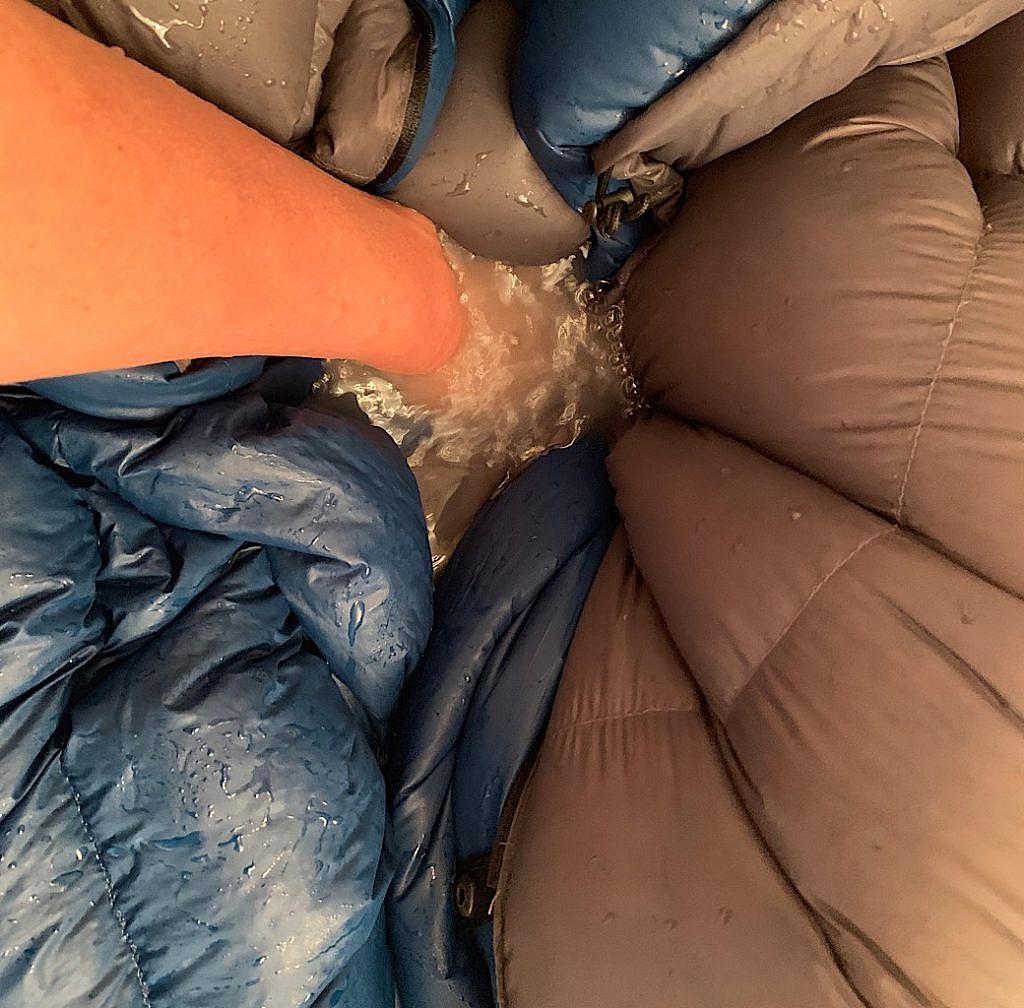

Here’s something I get asked a lot – How the heck do you wash your down quilt or sleeping bag?
For starters, you should probably not wash down until things get really out of hand. So let’s use our imaginations to take us to that moment of out-of-handedness when a good washing is all one can do.
Imagine putting your face right up against your furry dog. If she’s freshly cleaned, this might be a delight of fuzzy, nuzzly therapy. But had you two just returned from a long doggie run, your nose would likely receive a less-than-pleasant whiff of mousy, musty animal-odor.
That would basically describe my Hammock Gear Burrow quilt after I finished walking the Te Araroa. It’s not a totally horrible smell, but it’s mighty strong and it left me no other choice than to go through the arduous, time-consuming, gently-caring, get-completely-wet-and-covered-in-soap, hand-washing process to bring my HG “Blue Moroccan” (full review and specs) back to her fresh, fluffy self.
It was so worth it not just because I’ll have her ready for the next thru-hike, but also because this quilt is now on the list as a go-to piece of equipment and I want to take very good care of it.

First, a review before diving into the deep end on washing, but you’re welcome to skip down a few graphs and get right to it if you like.
For starters, Hammock Gear is superb on temperature rating. They simply get it and this is not always the case. Many manufacturers make claims that are either, shall-we-say, overly optimistic or appear based on people’s high tolerance for cold or high tolerance for extra body fat!
I purchased a summer quilt that was designed to keep me warm down to 20 degrees (-6 Celsius) While the Te Araroa was mostly modest temperatures, there were two nights I tucked the quilt completely around me, wore all my clothes including my down coat and managed to get cozy.
Part of the reason this worked is that I followed HG’s advice for “ground sleepers” and purchased an extra wide quilt that I could tuck in, almost touching in the back – in essence, acting more like a sleeping bag. This worked especially well on drafty nights when I really wanted to keep the door open on the alicoop for the full moon on a lake or to catch the night sounds.

I also chose a zippered footbox rather than sewn for the flexibility to use the quilt as one big down blanket or to zip it up and create a sleeping bag for my lower legs. The zipper does feel a bit flimsy. I imagine the intention is to keep the quilt ultralite, but I was not always able to find the teeth in the dark.
Hammock Gear adds a drawstring to the top of the bag, which sometimes bangs my nose, but it allows me to simulate a sleeping bag by wrapping the top around my neck and snapping it in back. The foot also closes with a drawstring, which proved adequate on colder nights.
As I mentioned in my initial review, there is a bit of adjustment to the feeling of your back being exposed like a poorly fitting hospital gown. This is the deal you make with quilts by not having down under you, you have a fluffier, warmer, and more adjustable sleep system that’s ultralite. I am definitely a convert to quilts.

Here’s how to clean a down quilt/sleeping bag
There are some cardinal rules about down – don’t wash it! But like I said above, if you have to, wash it very carefully. Do not dryclean and do not use a top-loading washing machine. The agitator can destroy the feathers. You can use a side-loading machine or wash it in the bathtub by hand.
You have to get the right soap for the job. Never use detergent. This strips the down of oils, destroying the warming and lofting properties. I use Nikwax Down Wash because that’s what Midwest Mountaineering has in stock. There are others that work well, but look for special products made to wash down.
Use cold or slightly lukewarm water and dissolve about three ounces (100 ml) of down wash in the water before submerging the quilt. One tip I’ve heard is to keep the quilt in its stuff sack when washing. The idea is that this keeps the quilt or bag in one clump and makes it easier to push underwater. Of course, I did not do this and felt like I was drowning a balloon. As funny as that looks, it actually puts me at risk for ripping the fabric. So in very, very, slow motion I gingerly kneaded the fabric, eventually working the water inside to wash the feathers.
Soak the quilt for twenty minutes before rinsing. Carefully press out the water – never wring it out. Afterwards, carefully lift the entire ball of wet in your arms – I used a wide plastic bucket as an assist – and carry it to the dryer. Set the machine on “fluff air,” add a couple of tennis balls, and the very tedious process of drying.
Every twenty minutes or so, you need to hand-separate the clumps of down as they dry. You also need to disperse the down throughout the quilt. Unfortunately, I sent my clumps down baffles, but because there are tiny openings at each end, they migrated and I found no down whatsoever in some of the baffles. It has been a long, tedious process to ensure the down is equally distributed throughout the quilt.
For the most part, I love the quilt. I don’t love the cleaning process and I am not sure I have the finger strength or patience to return it to its balanced loft. Still, I will likely take the Hammock Gear Burrow Econ on my next thruhike, and so give it four Anitas.



5 Responses
Based on your experience and write up I got me a PHD quilt. It’s really comfortable, packs small, great when staying in hotels whose quilts are normally far too heavy and warm for me. It would have been great for camping last summer in the U.K. when we had abnormally hot weather and even the lightest sleeping bags was too warm.
My sleeping bags don’t fit into a UK sized tumble dryer. So I dry them on towels on the back of a settee…takes about a week with much kneading.
that’s a lot of kneading! maybe you can come over and help me sort out the Blue Moroccan 😍
You can wash down in a washer, on gentle cycle, and dry it in a dryer with tennis balls or clean tennis shoes! It works so well and it is so easy.
not top loaders! I mean you can, but you shouldn’t